
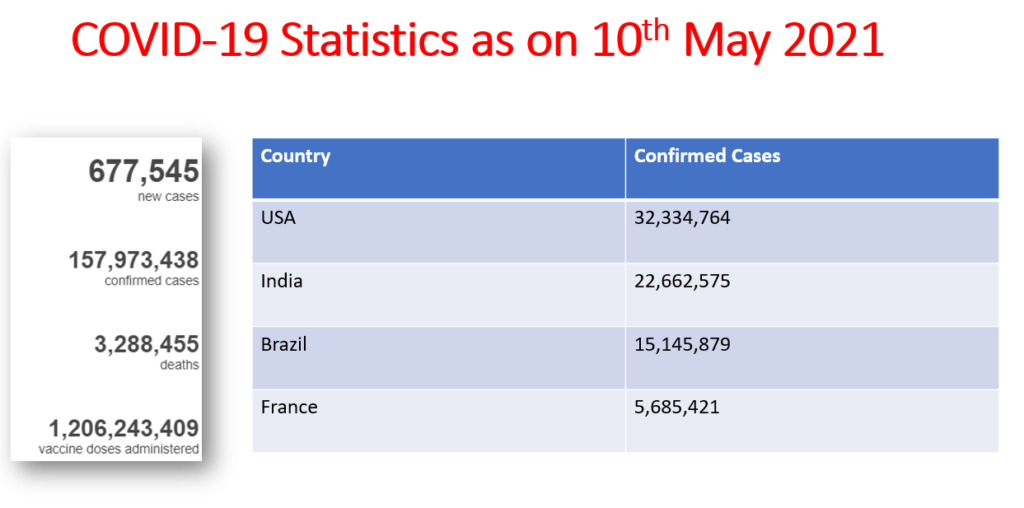
Highlights: • Nanoparticles • Nanotoxicity • Covid-19 Virus vs NPs • Nanotherapeutics
•Nanometer = 10-9 m •1 Angstrom =0.1 nm •Diameter of Hydrogen atom = 0.1 nm •Diameter of COVID-19 Virus = 100 nm •Solute and Solvent •Adsorbate and adsorbent •Solvation, Coagulation, Clotting •
•High surface are to volume ratio •Morphology •Controllable aggregation
•Size •Chemical composition •Surface structure •Solubility •Accumulation tendency •Binding tendency with toxic pollutants
•Transport pollutants •Causes pulmonary diseases •Can travel freely in blood vessel everywhere Brain, liver, lungs
•Unsafe for the biological system. •Enter the human body easily. •At cellular level •In tissues and organs •Carcinogenic •Allergic •Physisorption •Chemisorption •Triggers blood clotting
•Finer the particle size •Increased surface area •Enhanced catalytic activity •Enter the human body easily. •At cellular level
•Airborne •Less than 10 nm size oBehave like a gas oPass through skin •SAM (Self Assembly of Monolayer) by surface adsorption •Thread like nanotubes •Similar to asbestos fibres
•Lung fibrosis •Silicosis in dry grinding of asbestos •Fullerene, bucky balls attract electrons •Damages free radicals •Can be controlled by wireless technology •

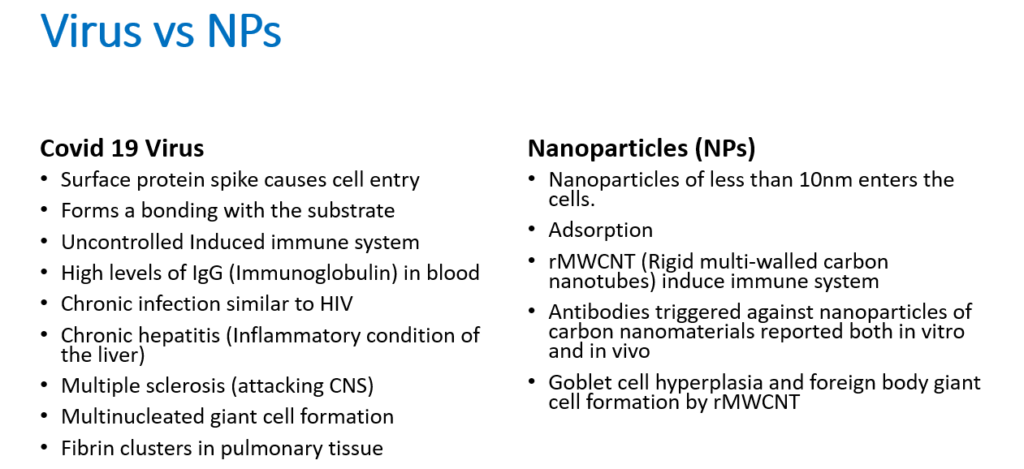
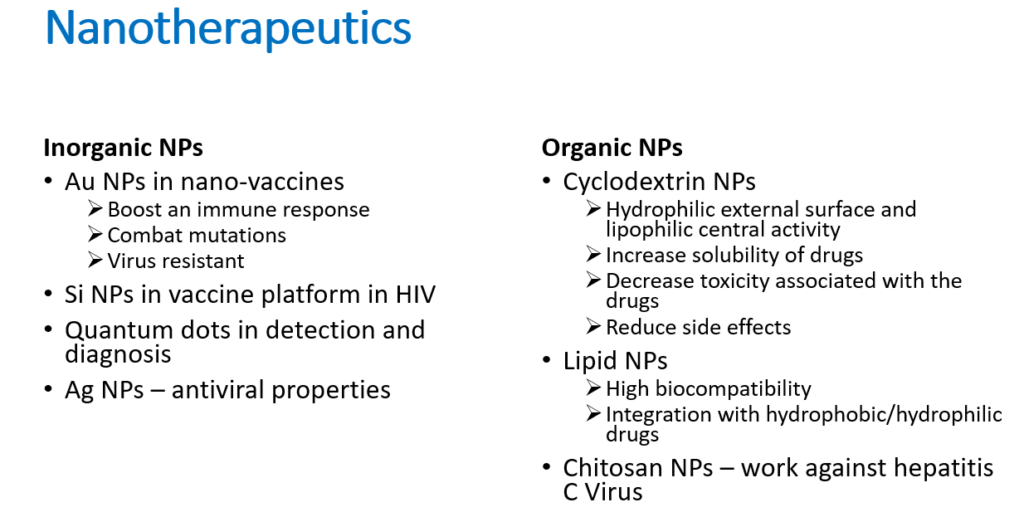
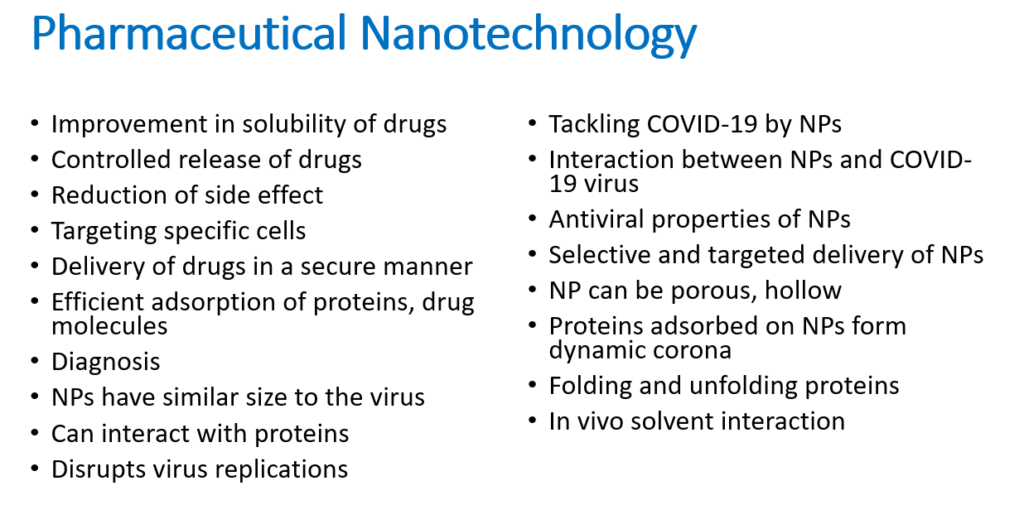
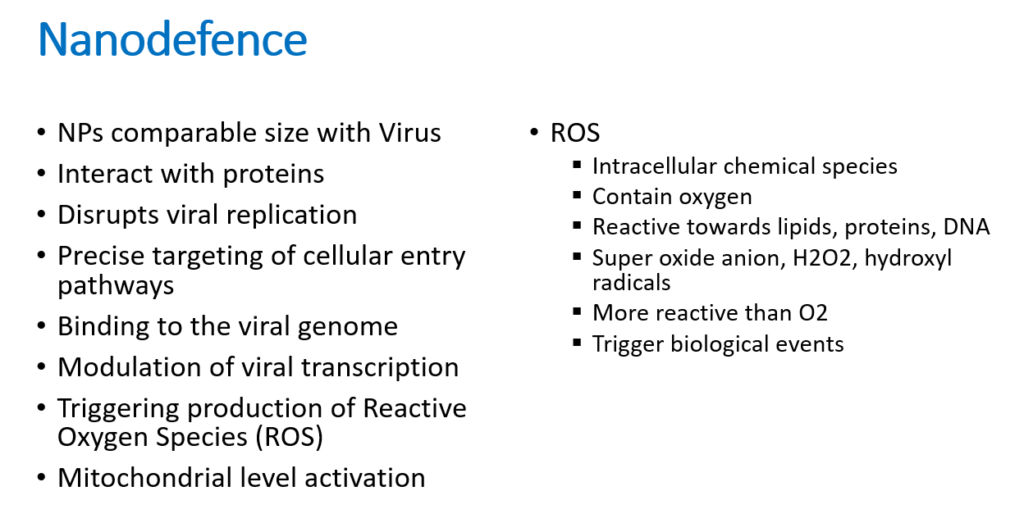
References
1.Champeau Rachel., Assessing safety, health risks of Nanomaterials, 2006, EST, University of California, Los Angels. 2.Jin Y., Wu M. and Zhao X., Toxicity of Nanomaterials to Living Cells, University of North Dakota, US, 274 – 277, 2005. 3.Pia A.S. Kinaret, Giusy del Giudice, Dario Greco, Covid-19 acute responses and possible long term consequences: What nanotoxicology can teach us, Nano Today 35(2020) 100945 4.Mohammed A.H. Farouq, Mohammed M. AI Qaraghuli, Karina Kubiak-Ossowska, Valerie A. Ferro, Paul A Mulheran, Biomolecular Interactions with nanoparticles: Applications for COVID-19, Current Opinion in Colloids & Interface Science, April 2021, 101461



